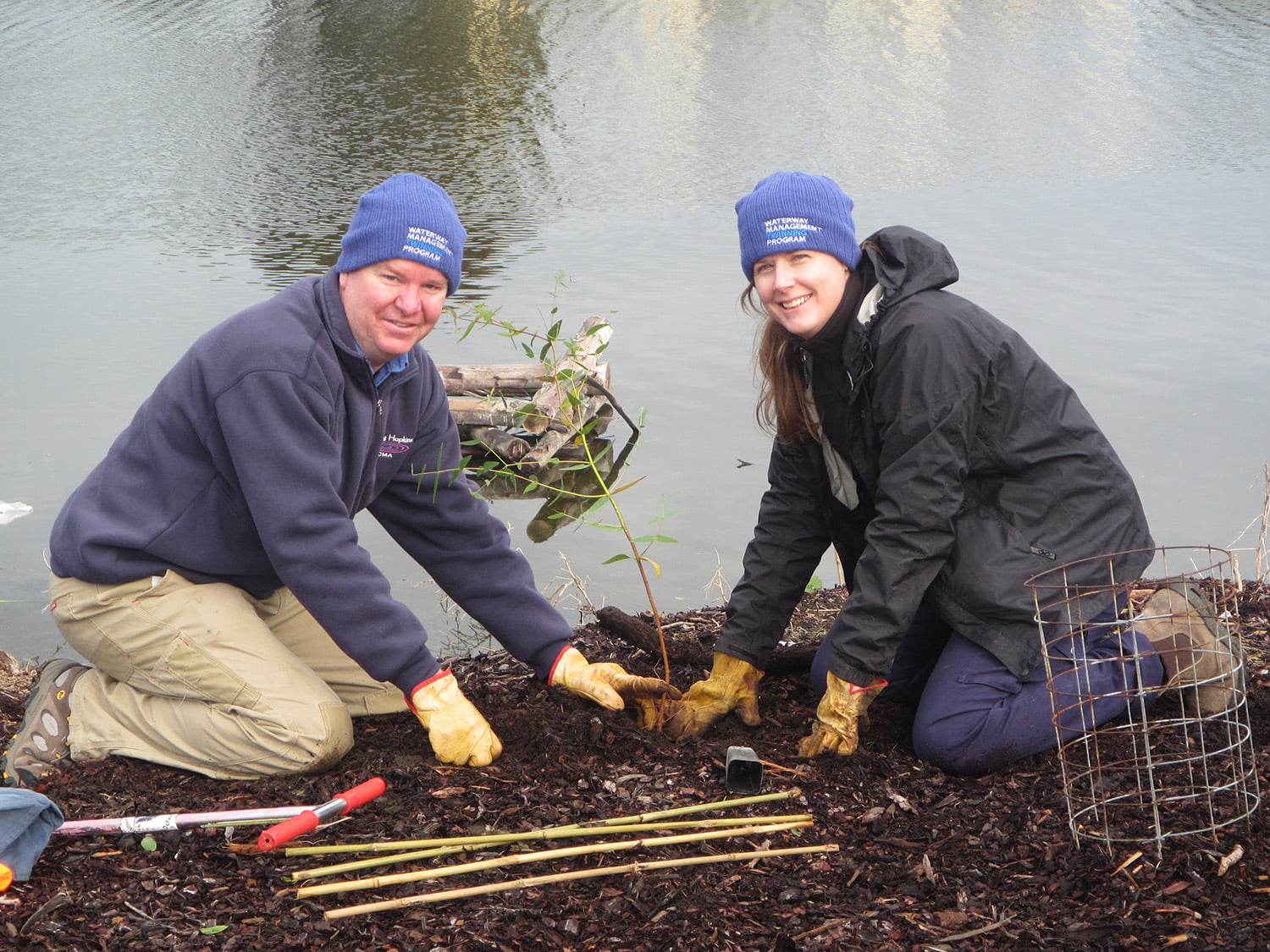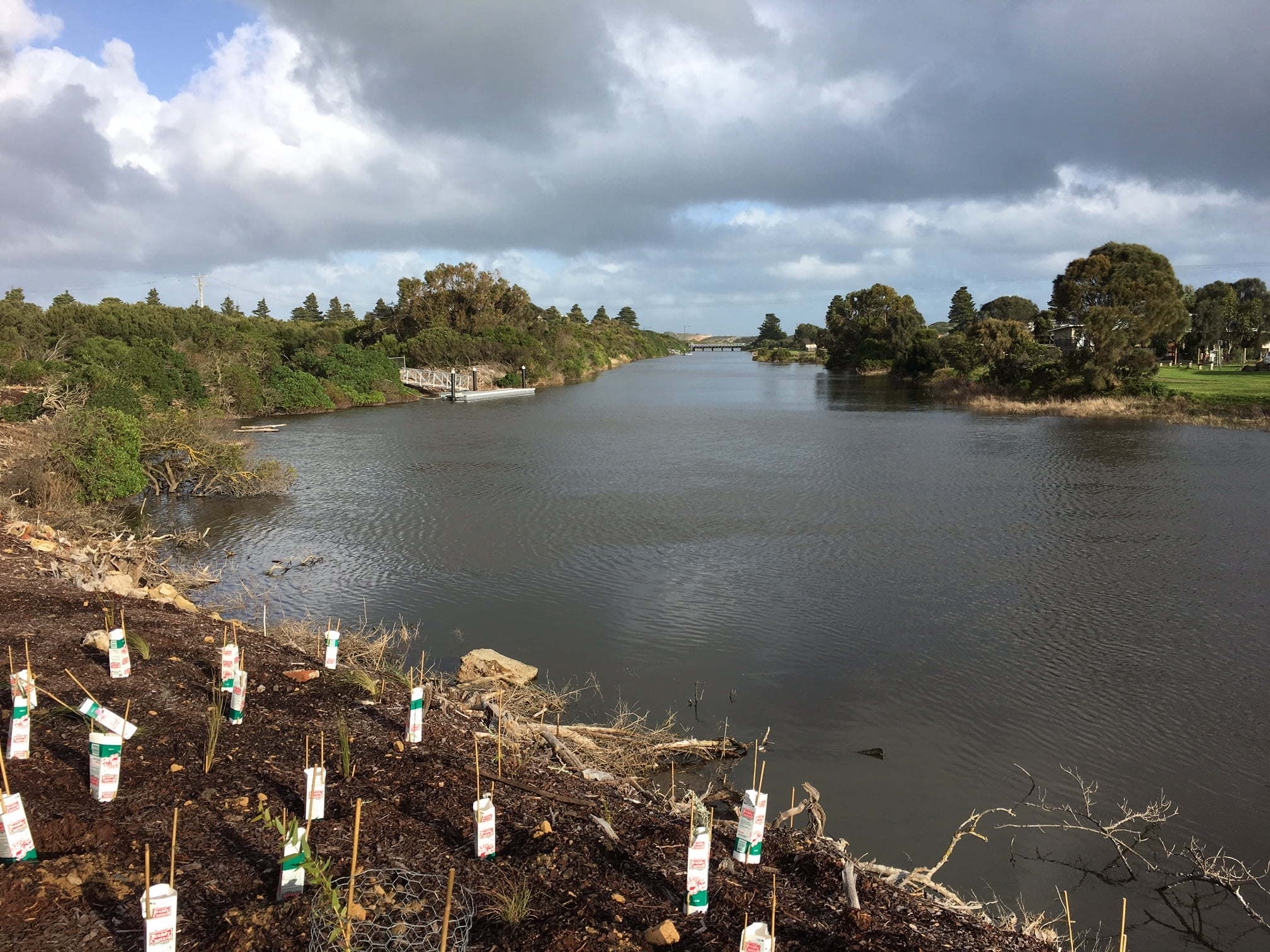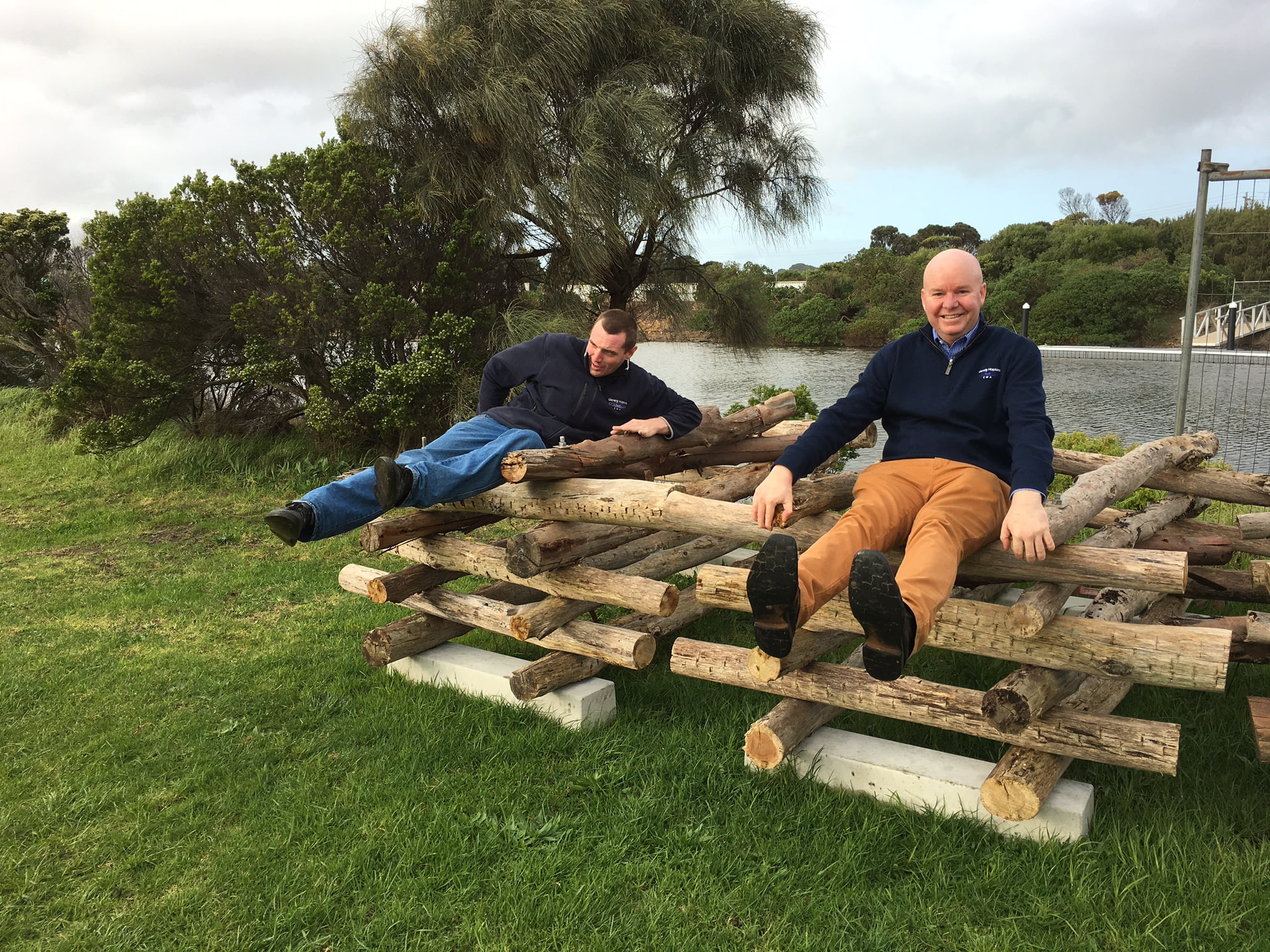Twinning Partnership:
Craig Copeland – OzFish & Stephen Ryan – Glenelg Hopkins Catchment Management Authority & Renae Ayres – Arthur Rylah Institute
Our project investigated on-ground action to improve fish habitat and fishing access in the Merri Estuary (Victoria), as well as raising awareness amongst the community about the benefit of rehabilitating waterways to support fish populations and social values, like fishing.
Our goals were:
- Professional development: broadening networks, sharing knowledge and resources
- Delivering activities for the Merri Estuary Fish Habitat Hotspot Project
- Developing a Habitat Management Plan for the Merri River Catchment as well as development of partnerships with recreational fishers, local Landcare and existing projects.
Our actions:
- Stephen, Renae and Craig contacted each other to seek advice and share resources about waterway rehabilitation, fish and engagement approaches, as well as plan activities related to the project.
- Stephen and Craig attended the 2015 Australian Society for Fish Biology Conference in Sydney. The conference included a special, one- day forum about native fish in the Murray Darling Basin. Craig introduced Stephen to various researchers, waterway managers and recreational fishers.
- Renae and Craig worked with people from other organisations to deliver the Geelong Fishers for Fish Habitat Forum, at which Craig was a guest speaker. The forum provided Craig the opportunity to connect with Victorian recreational fishers, researchers and waterway and fisheries managers.
- Renae participated in the CMA MERI Show ‘n’ Tell workshop facilitated by Lucy Cameron (Glenelg Hopkins CMA) and James Shaddick (North Central CMA) as part of their twinning partnership. Renae met staff from other waterway management agencies and learnt about their MERI experiences and innovative and effective approaches to MERI.
- On-ground works were undertaken to improve fish habitat in the Merri Estuary involved weed removal, rubbish removal, planting native vegetation, installing instream habitat (fish havens and rocks), and building two new floating jetties.
- Several events were held to engage recreational fishers and the community about the project, fish and fish habitats. These included an initial project meeting; fish research demonstration afternoon; presentations to local clubs, Warrnambool Fishers for Fish Habitat Forum and a community planting trees for fish day.
- Two meetings have been held with community to plan future opportunities for restoring the Merri River
- A workshop was held in early July 2016 that Stephen and Renae attended. Stephen and Renae gave a summary of the works completed for the Merri Estuary Fish Habitat Hotspot project, and how these types of works should be considered as complementary works when completing other works. The workshop also provided opportunity for Stephen and Renae to raise options to improve water quality through the Merri River. This integrated approach was fostered from experience and guidance from Craig and has established a realistic set of priorities and opportunities for improving river health in the Merri River.

Key learnings:
Genuine ongoing partnerships are critical to the success of any project. It’s anticipated that the partnerships developed as part of the waterway twinning program have made for an easier working relationship with stakeholders involved now and into the future. Project/program works often begin without partnerships been developed or understanding of what each member brings to the table, the Waterway Management Twinning Program has removed a lot of formalities and has given us time to develop our working relationship.
The video below is part of the project where Stephen is out engaging anglers…
WHAT DID YOU PERSONALLY GAIN FROM THE WATERWAY management TWINNING PROGRAM?
“Craig’s and Renae‘s input to the fish habitat project on the Merri River has been profound. Their combined influence have produced a project that is broader, in terms of timeframes, geographic and technical scope and involves much greater collaboration with local community and angling groups. Their input has being augmented with restoration advice from all the other Waterway Management Twinning Program participants to plan a new urban restoration project on the Merri River. The input of the Twinning participants has led to a project plan highly focused on industry and local government collaboration and community involvement in river restoration.
The program has offered me the chance to look at the bigger picture and help me to progress projects that little bit further. It has also given my confidence to talk to other stakeholders on larger issues and more complex environmental issues, with support to back me up. I was very happy to have two very respected “fish nerds” come to Warrnambool to support me and also give me confidence that what I was doing was having impact.”
– Stephen Ryan
“The Waterway Management Twinning Program expanded my personal network through connections with my immediate twinning partners, other participants of the twinning program and meeting people at various activities and workshops. It provided insights into the organisational culture of different agencies. The Program enhanced my knowledge and skills, particularly relating to project management, MERI practices and stakeholder engagement. It provided an honest, supportive environment to discuss and gain feedback on professional and personal development areas. I have greater appreciation of the different perspectives and complexities of waterway management. I feel inspired and empowered to continue making a positive difference to natural resource management.
I thoroughly enjoyed meeting new people, sharing our knowledge and stories, and the workshops, activities and field visits. I appreciate the friendships developed with twinning participants and enjoyed the project that my twinning partners and I worked on together. I feel privileged to be able to interact with and learn from people that I admire and respect. I am excited by potential opportunities to continue our partnerships into the future.”
– Renae Ayres
“I identified a number of excellent personal and professional tools that will assist me to improve the delivery of my job (and the management of my life!). I was also able to visit sites and meet people and test whether my knowledge and experience were useful to assist others outside my geographic area of work I liked the way the workshops were structured and the number of people involved. I particularly liked that I could help an organisation to deliver improved aquatic habitat outcomes.”
– Craig Copeland
Program’s legacy:
From the group’s first visit to the Merri River during the initial Waterway Management Twinning Program workshop there was an obvious desire, from the entire group to see positive change on this important regional river. With the input of Craig and Renae, and with ideas and methods taken from all participants in the Program, Glenelg Hopkins CMA’s works program on this reach has expanded from some fish habitat reintroduction and willow removal at a few limited sites, to plans for an integrated, ongoing, whole-of-reach project. This new project will consider all aspects of river health including water quality, fish barriers and riparian zones and will look to collaborate with a large range of stakeholders from local government, fishers and Landcare, water authorities, community and industry. This new plan has been backed by the Victorian Government who are looking to commit $430,000 over the next four years to deliver a project – an excellent outcome from the Waterway Management Twinning Program.




